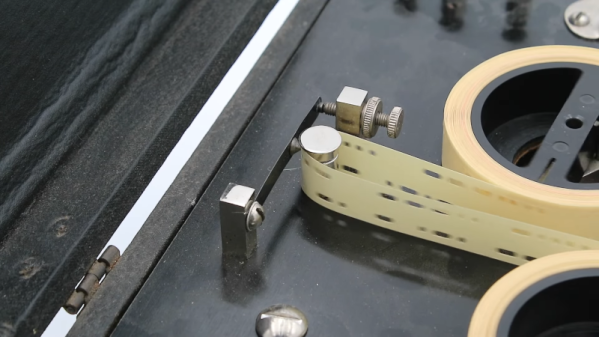If you are a ham radio operator of a certain age, you probably remember ads for “The Instructograph,” a mechanical device for learning Morse code. [Our Own Devices] has an ancient specimen of the machine and shows us how it works in the video below. The machine is a model of simplicity. You wind up a spring-driven motor like you would for an old record player or music box. A slider sets the playback rate, and paper tape starts to spin.
The paper tape looks like computer tape, but since it only has literal long and short notches, it has two distinct sides. When you learned one set of messages, you could flip the tape over and get more practice that way. How did the machine read the paper tape? With a mechanical contact. Literally, if the paper had a hole in it, you made the circuit. If it didn’t, the circuit was broken. A buzzer and batteries or some other kind of sounder was all you needed.
The company was in business for 50 years. The newer versions had more electronics, but they always used the paper tape mechanism to store the code practice sessions. A 1962 ad noted that the machine could play back the tapes from three words a minute up to 40. You could buy or rent the machine, and we always assumed it was pretty pricey for its day. Around 1965, a new unit would cost $53 but did not include a headset or a key. So that was actually more reasonable than we expected. In 1965, a brand-name clock radio cost about $50, so it wasn’t any more than that.
Everyone has their own favorite method for learning code, especially [Ludwig Koch]. At least you don’t have to learn Alex-style.












